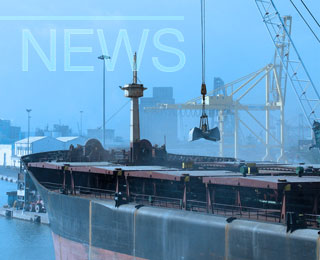After the upturn of the market last week, rates have kept on rising over the last five trading days. Levels which were talked about a week ago have been achieved for all segments of the dry bulk fleet. Everyone is wondering if the feared influence of holidays in Asia has not been exaggerated and if this rush is not predicting a stall? Such question have been repeated so many times since the winter 2003, with each time nothing really significant happening that the horizon for market players remains very short.

Along with record profit announcements this week on both the shipowning and the industry sides, some news arrived like small clouds in this rather clear blue sky. First the release of adjusted Chinese growth figures, showing that the industrial boom is cooling since the start of 2005. Then Chinese government will impose new import licenses for iron ore from March this year, which will particularly have an impact on the supply of the smaller steel mills. And last but not least, the price increases asked by iron ore producers (+90 %!) seem to be increasingly unbearable to steel producers, who will have to pass it on their clients. Some already think that this will perhaps also could lead to curb the overall demand for steel in the longer term.
The Panamax market was proving all those right who expected rates to climb further after the Chinese New Year. All routes were up, the time-charter market is still impressive, with 3-6 months rates at US$39,000 / 41,000 still higher than the spot market: the Baltic time-charter average today stands at US$38,775. At this level, ships have been fixed for one year... The rate for two years or longer held firm, too, but with few fixtures being actually completed. So the market is rising, and most players are adamant for the next few months, but beyond this horizon the first warning voices can be heard.

In the Handymax sector, rumours of a large crop of grains in South America tempted owners to position their ships in advance in this part of the world. However, theses cargoes are still not ready to be shipped as unsold apparently and the drought in Brazil might have also affected the volumes. Owners had to discount hence either to escape from their spot position in South America or to bring their ships to South Atlantic but at further dates, hopefully with the right timing. Only the US Gulf business experienced improvements of t/c rates of about US$5000 daily bringing Tess 45 to over US$35,000 for a trip to Cont-Med. Pacific has recovered slowly from the Chinese New Year thanks mainly to the Indian iron ore going to the Far East. Modern Handymaxes located in the area are now seeing impressive numbers close to US$40,000.
